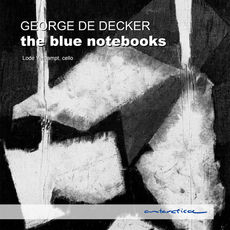Technicalities
Technicalities
Label Philosophy
Label Philosophy
Label Philosophy


De Decker: Aphasia Universalis
Ensor Quartet, Elisabeth Chojnacka
Cat No
AR 068b
Release
9 Apr 2025
A composition for harpsichord, string quartet, voice & singing: APHASIA UNIVERSALIS (1993),
based on a scenario by Stefaan Decostere. The starting point was the human voice, specifically the inability to speak (referring to the medical term Aphasia universalis).
De Decker explains:
In search of a sort of catalog of voices, I listened to countless archive recordings, quotes from the ‘greats of the earth.’ I selected one word each time: the word “I”, which appeared in about fifty different languages. That became the foundation for a score for male and female voices (Sylvia Broeckaert and Johan Van Keirsbilck), improvisations that I recorded on a sound tape and then combined with a string quartet. And because I had long wanted to collaborate with Elizabeth Chojnacka, I wrote a harpsichord part for her. Thus, it became a work for harpsichord, string quartet, and two voices.
For the singers, he wrote a “graphic score”—a kind of visual guide to support them in their improvisations. Traditional musical notation falls short here, as it bypasses the essence of improvisation. The composer provides only a direction, a line. With a graphic score, he directs the singers by writing a sonic scenario: how they should, for example, position themselves relative to the microphone, while still allowing them the freedom to put their own stamp on the improvisations.
Aphasia Universalis
- Aphasia Universalis (1993)
Composition for harpsichord, string quartet, voices & stereophonic tape
Elisabeth Chojnacka, harpsichord
Ensor String Quartet
MUSICIANS ON TAPE
Lawrence Weiner, voice
Sylvia Broeckaert, vocals
Johan Van Keirsbilck, vocals
And archive recordings
Opening Times
Monday to Sunday: 10:00 AM - 6:00 PM
Last entry at 5:30 PM
Closed on Saturdays
Unlimited tickets available for purchase at the door.




